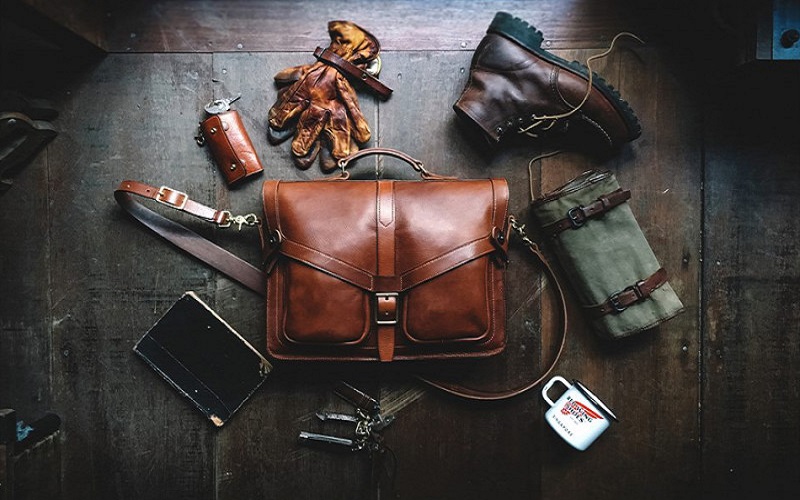Chưa phân loại
Guide to Distinguishing Genuine Leather from Faux Leather
Guide to Distinguishing Genuine Leather from Synthetic Leather
To help customers understand more about the materials and quality of leather bags and wallets, I’m sharing some basic knowledge to help everyone choose suitable products, especially since the market currently has many products labeled as “genuine leather” that are actually synthetic.
Types of Genuine Leather
- Top-Grain Leather: This is the best leather layer, with a thickness of 1.0 – 1.5mm and high durability. It’s divided into:
- Full-Grain Leather: Retains its natural state, with no surface adjustments. It’s very durable but harder to clean.
- Corrected-Grain Leather: The surface is treated to reduce scratches and has a protective layer, making it easier to clean and resistant to scuffs.
- Split Leather: The lower layer of leather is treated and coated with a synthetic layer. This leather is harder and less durable, as the synthetic coating can peel off in hot, humid weather. However, it’s good for creating sturdy, stylish bag shapes
- Other Animal Leathers:
- Pigskin: Has round, coarse pores in a triangular pattern, with a hard and flat surface.
- Cowhide/Buffalo Hide: Has round pores that are evenly distributed. Buffalo hide has larger, fewer pores and a less smooth appearance compared to cowhide.
- Goatskin: Features arched grain lines with small and large pores, providing a smooth, soft surface.
- Horsehide and Sheepskin: Each has unique pore patterns and surface characteristics, often used for soft bags and luggage.
- Synthetic Leather: Two main types include:
- Simili (PVC): Affordable, stiff, with a polyester coating, often used for general market products.
- PU Leather: Soft and quite similar to genuine leather. However, it is synthetic, so it tends to peel over time.

Ways to Distinguish Genuine Leather from Synthetic Leather
- Smell: Genuine leather has a natural, slightly musty smell, while synthetic leather usually smells of plastic or chemicals.
- Burn Test: Genuine leather emits a burnt organic smell (like roasted meat), while synthetic leather melts and forms lumps.
- Water Test: Genuine leather absorbs water in a few minutes, while synthetic leather does not absorb.
- Surface Observation: Genuine leather is slightly rough with natural grain patterns and pores. Synthetic leather is smooth, uniform, and lacks these characteristics.
- Elasticity: Pressing genuine leather leaves an indentation that springs back, whereas synthetic leather lacks this elasticity.
- Color Over Time: Genuine leather fades slightly with time and can be refreshed with polish or conditioner. Synthetic leather remains unchanged or quickly becomes dry and cracked.
- Leather Sheet Size: Genuine leather pieces are small and irregularly shaped, while synthetic leather often comes in large, even sheets.
A Note on Choosing Genuine Leather: Visit a store to inspect the product in person, as not all testing methods can be applied directly to a finished item.
I hope this information helps you when choosing genuine leather products!

